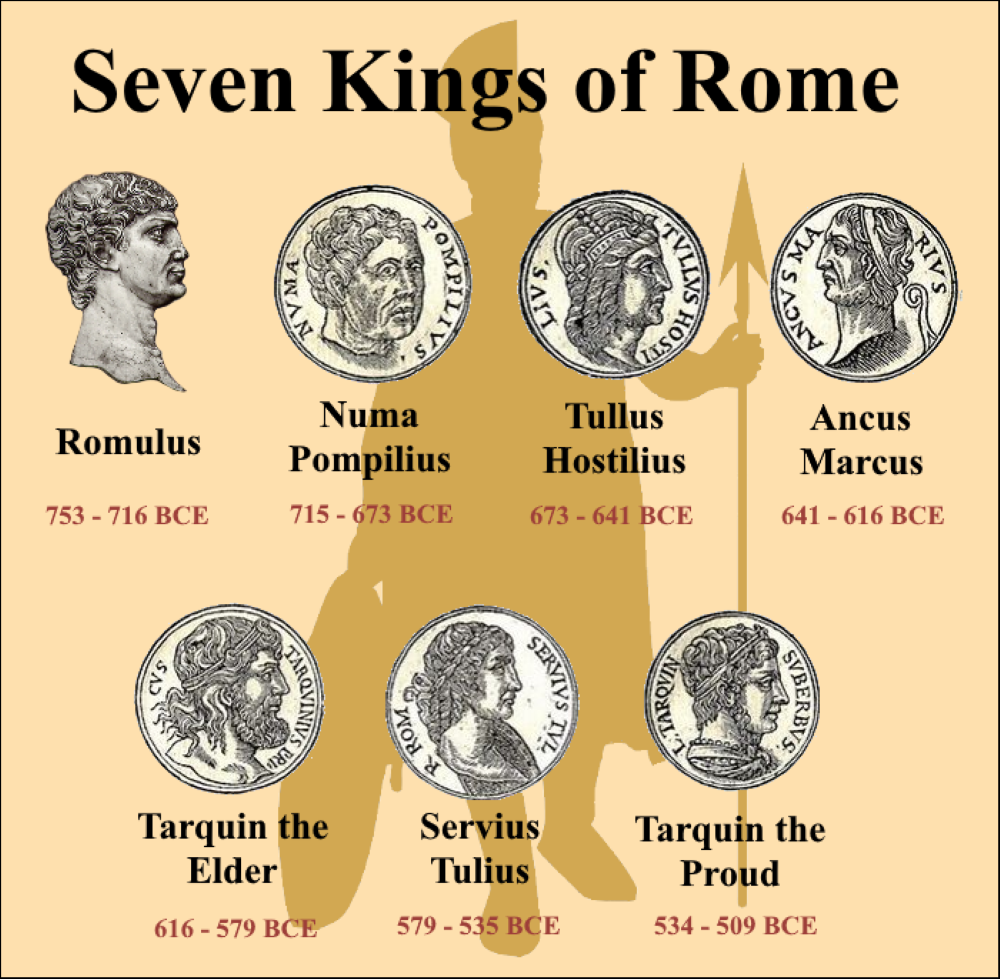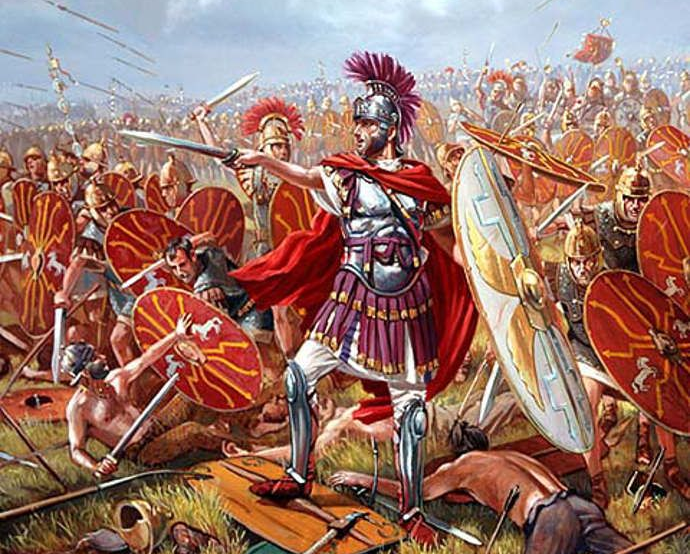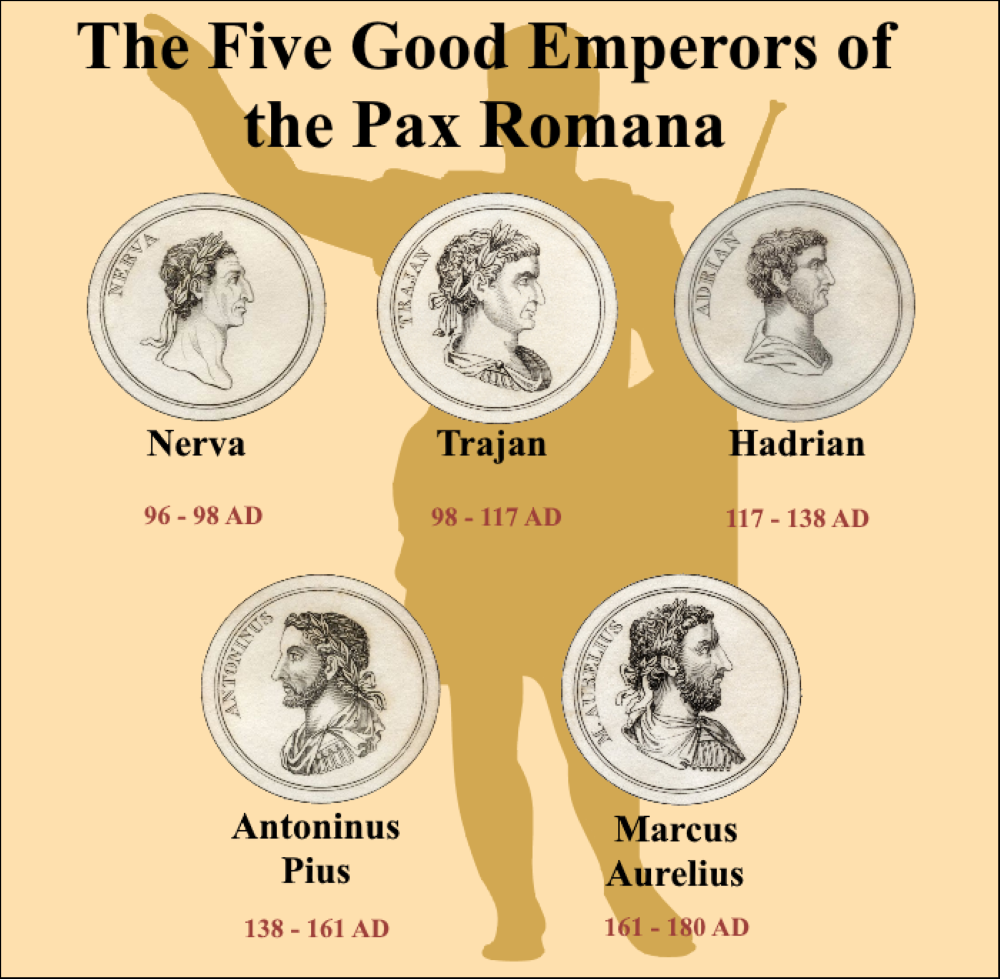

"The difference between a republic and an empire is the loyalty of
one's army."
- Julius Caesar -


"The difference between a republic and an empire is the loyalty of
one's army."
- Julius Caesar -



The Roman Empire first began as a small, humble kingdom that co-existed with the Etruscans. Rome was one of the many city states in the Italian peninsula. It is unknown when Rome was founded. However, Roman tradition declares April 21, 753 B.C. as the official date. In fourth century B.C., Roman scholar Marcus Terentius Varro set the exact date of Rome's founding in the first century B.C.
Romulus and Remus had a grandfather, King Numitor, who ruled a kingdom located in the Alban Hills. The mythical city of Alba Longa was southeast of the plot of land that became Rome. According to legend, Amulius, the younger brother of Numitor, disposed the king and demanded Numitor's wife, Rhea, to drown her twins in the Tiber. Amulius did not want to deal with rival claimants to his throne. Twin brothers, Romulus and Remus, survived and became leaders of shepherd warriors.
After Romulus and Remus learned about their true identity, they returned to Alba Longa and restored King Numitor to the throne. Romulus and Remus returned to the site where they were saved as infants and wanted to found a town. However, when the twins wanted to decide the name of the town, Romulus and Remus fought and quarreled. Romulus murdered Remus and named the town after himself. This small city of Rome was the beginning of the Roman civilization and future Roman Empire.

For over two centuries, Rome was a kingdom. The Romans had seven kings.
In 509 B.C., the Romans expelled Etruscan kings and established their own government. They believed that one man, the king of Rome, was being too powerful. A Roman Republic government made sure that no one person became too powerful. They elected two consuls, which were rulers who had the same power as the king, each year who served one-year terms. According to Roman tradition, the year 509 B.C. marked the beginning of the Roman Republic.
509 B.C. - Republic founded.
494 B.C. - First Tribune of Plebes Elected.
451 - 450 B.C. - Law of Twelve Tables codifies Roman Law.
396 B.C. - Romans sack Etruscan town of Veii.
390 B.C. - Gauls attack and burn Rome 390.
367 B.C. - Licinio-Sextian Laws.
366 B.C. - First plebian consul elected.
343 - 290 B.C. - Three wars with Samnites.
282 - 275 B.C. - War with King Pyrrhus defeats Greek colonies.
265 B.C. - Rome dominates Italian peninsula.
264 - 241 B.C. - First Punic War.
225 B.C. - Gauls invade Italy.
218 B.C. - Second Punic War.
216 B.C. - Hannibal defeats Romans in Battle of Cannae.
201 B.C. - Second Punic War ends.
105 B.C. - Romans defeat Macedonia and impose direct rule on Greece.
149 - 146 B.C. - Third Punic War.
49 B.C. - Pompey orders Caesar to give up his army; Caesar refuses; beginning of Roman civil war.
45 B.C. - Julius Caesar becomes dictator of Rome.
44 B.C. - Julius Caesar is assassinated.
27 B.C. - Roman Republic ends with Octavius (Caesar Augustus) becoming first emperor.

After five centuries of Republic rule, the Romans changed their government into an empire. They believed in the great conquest of expanding their lands and influences into other territories beyond Italy. In 27 B.C., the Roman Empire began when Caesar Augustus became the sole ruler of Rome.

27 B.C. - Roman Empire begins with Augustus crowning himself emperor.
64 A.D. - Rome caught on fire; Nero blames the Christians for burning Rome.
80 A.D. - Colosseum fully completed; Romans invaded Scotland.
122 A.D. - Hadrian Wall in northern England is built.
306 A.D. - Constantine becomes emperor and transforms the Roman Empire into a Christian empire.
380 A.D. - Theodosius I proclaims Christianity as the sole religion of the Roman Empire.
395 A.D. - Rome split into two empires: the Western Roman Empire and the Eastern Roman Empire.
410 A.D. - For the first time in 800 years, the city of Rome fell to an enemy, the Visigoths.
476 A.D. - German Goth Odoacer defeated last Roman Emperor Romulus Augustus, ending the Western Roman Empire.
1453 A.D. - Ottoman Empire captures Constantinople and toppled the Byzantine Empire, ending the Eastern Roman Empire.
The Romans ruled as an empire for about 400 years. Surprisingly, the Roman civilization was more stable as a smaller nation than a large empire. As a small nation, there was more stability, and when problems arose, the Roman government could easily fix the issues in nearby lands compared to distant lands in an empire. As an empire, the Roman government was more prone to corruption and instability, for news of instability from distant lands would come to the Roman government many months later.
